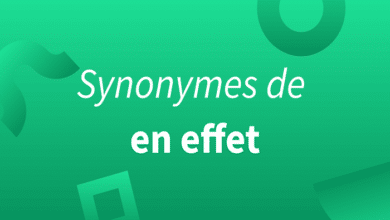Exploring Les Plus: A Deep Dive into the French Superlative

The French language, with its rich history and nuanced grammar, often captivates learners and enthusiasts alike. One of the intriguing aspects of French is its way of forming superlatives, specifically using “les plus.” In this blog post, we will explore the various facets of “les plus,” delving into its grammatical structure, common uses, and some fascinating examples.
What Does ‘Les Plus’ Mean?
At its core, “les plus” translates to “the most” in English. It is used to form superlatives, indicating the highest degree of an adjective. For instance, “le plus grand” means “the biggest” or “the tallest.” Understanding “les plus” is essential for expressing comparisons and extremes in French.
Grammatical Structure of ‘Les Plus’
The structure of “les plus” is quite straightforward. It is typically placed before an adjective to indicate the superlative form. For example, “la plus belle” means “the most beautiful.” This construction helps in comparing entities and highlighting the one that stands out the most.
Usage of ‘Les Plus’ with Adjectives
When using “les plus” with adjectives, it’s crucial to ensure agreement in gender and number. For instance, “les plus intelligents” (the most intelligent, masculine plural) or “les plus intelligentes” (the most intelligent, feminine plural). This agreement is a key aspect of French grammar that learners must master.
‘Les Plus’ in Everyday Language
In everyday conversation, “les plus” is frequently used to describe people, places, and things. For example, “C’est le plus beau jour de ma vie” translates to “It’s the most beautiful day of my life.” Such expressions are common and add a rich layer to spoken and written French.
Common Mistakes with ‘Les Plus’
Despite its simplicity, “les plus” can be tricky for learners. A common mistake is neglecting the agreement with the noun it modifies. For example, saying “le plus belle” instead of “la plus belle” can confuse the meaning. Being mindful of these agreements is crucial for accurate communication.
Examples of ‘Les Plus’ in Literature
French literature is replete with examples of “les plus.” Consider the famous line from Victor Hugo’s “Les Misérables”: “Les plus grands mots sont souvent les plus simples” (The greatest words are often the simplest). Such usage underscores the superlative form’s elegance and potency in French writing.
‘Les Plus’ in French Idioms
Idioms in French often employ “les plus” to emphasize certain traits or qualities. For example, “Les plus belles choses viennent à ceux qui attendent” (The most beautiful things come to those who wait). This idiomatic use enriches the language, making expressions more vivid and impactful.
The Role of ‘Les Plus’ in French Culture
French culture places a high value on precision and nuance in language. The use of “les plus” reflects this cultural trait, allowing speakers to articulate the highest degree of a quality or characteristic. Whether discussing art, cuisine, or fashion, “les plus” plays a vital role in French cultural expression.
Teaching ‘Les Plus’ in French Classes
For educators, teaching “les plus” involves illustrating its use through various examples and exercises. Practical application helps students grasp its importance and usage. Activities might include comparative exercises, sentence construction, and translation tasks, all incorporating “les plus.”
‘Les Plus’ in Comparative Sentences
Comparative sentences often use “les plus” to highlight distinctions. For example, “Elle est la plus intelligente de la classe” (She is the most intelligent in the class). Such sentences are essential for conveying comparisons effectively in French.
How to Practice Using ‘Les Plus’
Practicing “les plus” can be done through writing and speaking exercises. Learners can write descriptive paragraphs about their surroundings or favorite things, ensuring they use “les plus” to describe the highest degree of qualities. Speaking practice can involve conversations where learners compare different items or people.
Conclusion
Understanding and mastering “les plus” is fundamental for anyone learning French. Its role in forming superlatives and comparisons is crucial for clear and effective communication. By paying attention to grammatical agreements and practicing regularly, learners can confidently use “les plus” in various contexts.
FAQs
1. What does ‘les plus’ mean in French? ‘Les plus’ means “the most” and is used to form superlatives, indicating the highest degree of an adjective.
2. How do you use ‘les plus’ with adjectives? ‘Les plus’ is placed before an adjective, and it must agree in gender and number with the noun it modifies.
3. Can you give an example of ‘les plus’ in a sentence? Yes, “Elle est la plus intelligente de la classe” means “She is the most intelligent in the class.”
4. What are common mistakes with ‘les plus’? Common mistakes include incorrect gender or number agreement, such as saying “le plus belle” instead of “la plus belle.”
5. How can I practice using ‘les plus’? Practice using ‘les plus’ through writing descriptive paragraphs, engaging in comparative conversations, and completing grammar exercises focused on superlatives.




